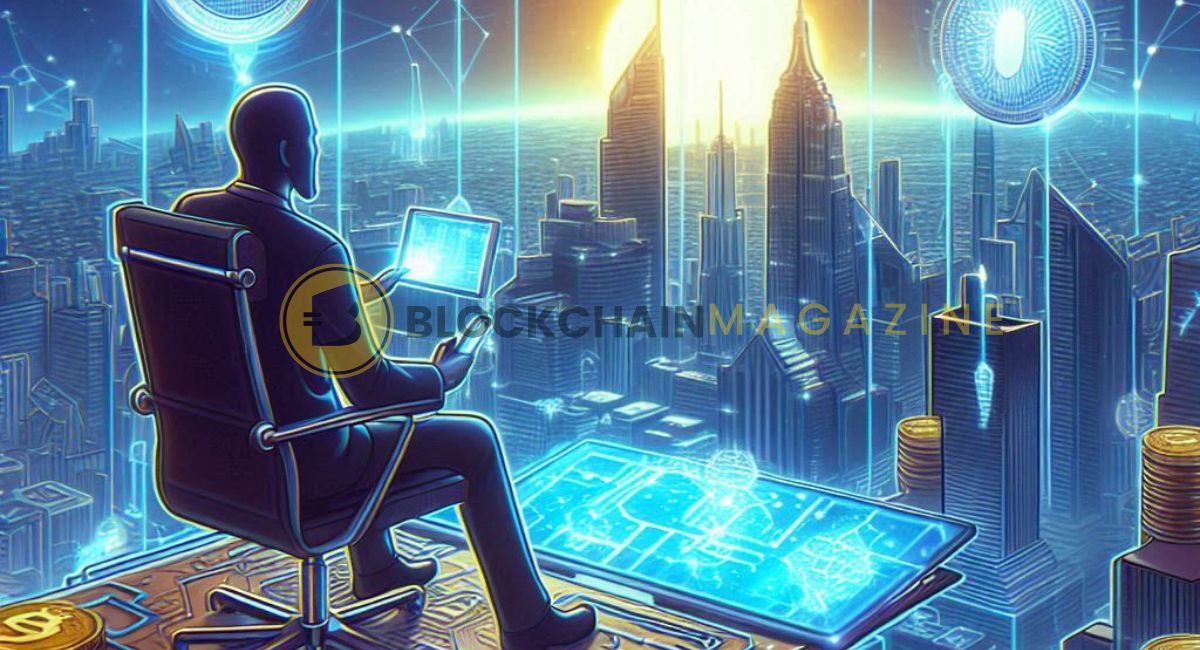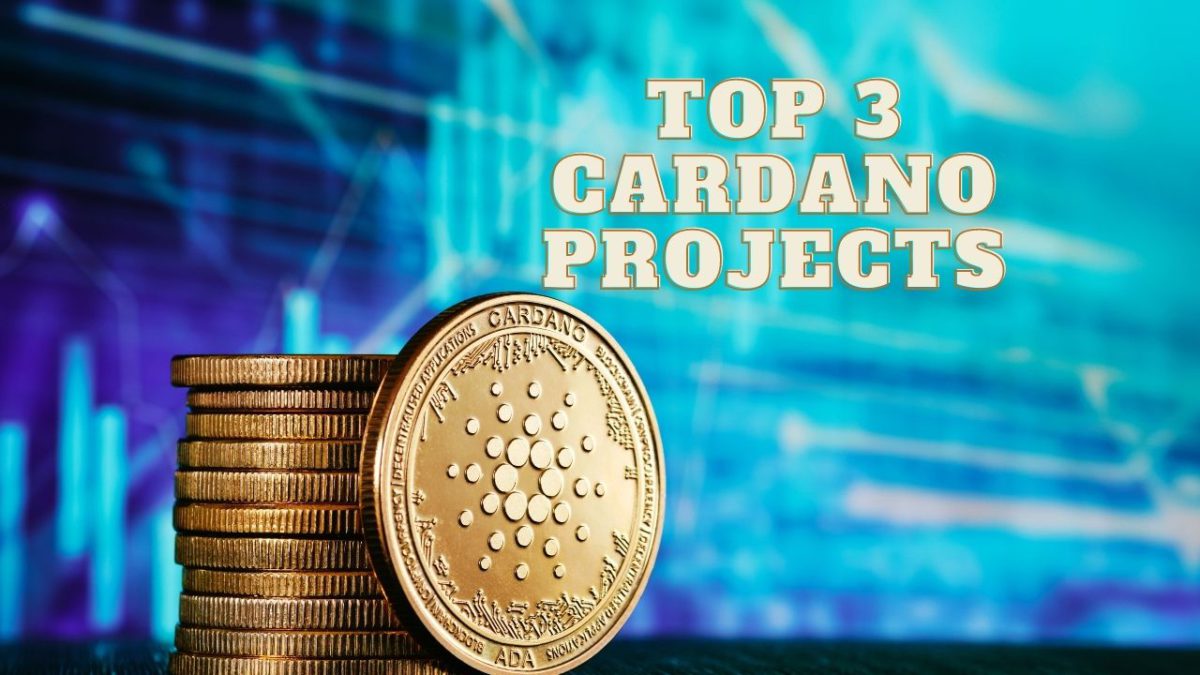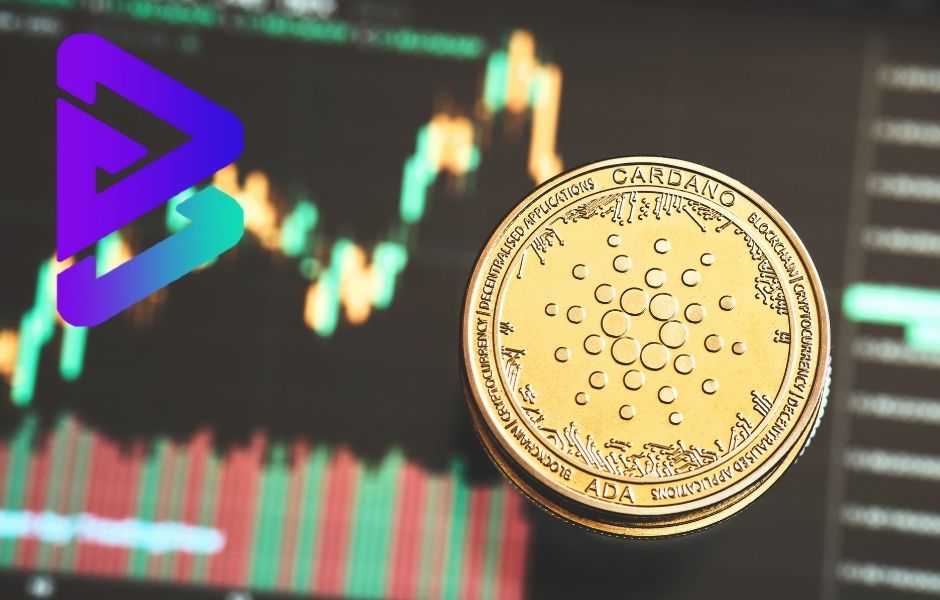Decentralized Applications (DApps): Best Blockchain Platforms for DApps in 2024
In 2024, decentralized applications (dApps) are becoming more popular as they change how we use technology. These innovative apps run on blockchain networks instead of traditional servers, offering users more control, security, and privacy. With more than 4,000 active dApps available, we see their impact in various areas like finance, gaming, and healthcare. This article will explore the top dApps, their benefits, and the challenges they face as they continue to grow in the digital world.
Key Takeaways
- DApps are apps that run on blockchain networks, providing more security and control for users.
- Ethereum and Binance Smart Chain are the leading platforms for building dApps in 2024.
- DApps are used in many areas, including finance (DeFi), gaming, and healthcare.
- Smart contracts are essential for dApps, allowing automatic actions without middlemen.
- Despite their growth, dApps face challenges like scalability and user adoption.
Understanding Decentralized Applications (DApps)
What Are DApps?
Decentralized applications, or DApps, are software programs that operate on a blockchain or a peer-to-peer network instead of a single computer. Unlike traditional apps, which are controlled by one company, DApps allow users to have more control and security over their data. This means that no single entity can dictate how the app works or how your information is used.
How Do DApps Work?
DApps function by using a network of computers, known as nodes, to manage their operations. Here’s a simple breakdown of how they work:
- Code: The app’s code is open-source, allowing anyone to view and contribute to it, similar to a community project.
- Data: Instead of being stored on one server, data is distributed across the network, making it more secure.
- User Interaction: Users connect to DApps through wallets, enabling them to interact directly with the application.
Benefits of Using DApps
DApps offer several advantages over traditional applications:
- Decentralization: No single point of control, enhancing security.
- Transparency: All transactions are visible and cannot be altered.
- User Empowerment: Users maintain control over their data and can participate in decision-making.
DApps represent a shift towards a more open and user-controlled internet, often referred to as Web 3.0.
In summary, DApps are changing the way we think about applications by providing a more secure, transparent, and user-friendly experience. They are a key part of the future of technology, especially as we move towards a more decentralized world.
Top Blockchain Platforms for DApps in 2024
Decentralized applications (DApps) are becoming increasingly important in the tech world. In 2024, several blockchain platforms stand out for their ability to support these applications effectively. Ethereum remains a leader due to its strong security and scalability features, but other platforms are also gaining traction.
Ethereum
Ethereum is the most popular platform for DApps. It offers a robust environment for developers to create smart contracts and decentralized applications. Its large community and extensive resources make it a go-to choice for many.
Binance Smart Chain
Binance Smart Chain (BSC) is known for its low transaction fees and fast processing times. This platform is ideal for developers looking to build DApps that require quick interactions and lower costs.
Polygon
Polygon enhances Ethereum’s capabilities by providing a layer-2 solution. It allows for faster transactions and lower fees, making it a great option for developers who want to improve user experience without sacrificing security.
Solana
Solana is gaining popularity due to its high throughput and low latency. It can handle thousands of transactions per second, making it suitable for applications that require speed and efficiency.
| Platform | Key Features | Ideal For |
|---|---|---|
| Ethereum | Strong security, large community | Complex DApps |
| Binance Smart Chain | Low fees, fast transactions | Cost-sensitive applications |
| Polygon | Layer-2 scaling, lower fees | Enhanced user experience |
| Solana | High throughput, low latency | Speed-focused applications |
The choice of platform can significantly impact the success of a DApp. Developers should consider factors like security, speed, and cost when selecting a blockchain for their projects.
Popular Use Cases for Decentralized Applications
Decentralized applications (DApps) are changing how we think about technology and services. Here are some of the most popular areas where DApps are making a big impact:
Decentralized Finance (DeFi)
DApps in finance are known as DeFi. They allow people to lend, borrow, and trade without needing banks. This means lower fees and more control for users. Some popular DeFi DApps include:
- Uniswap
- Aave
- Compound
Gaming and Virtual Real Estate
In the gaming world, DApps are creating new ways for players to earn money. Games like Axie Infinity let players earn tokens while playing. Additionally, platforms like Decentraland allow users to buy and sell virtual land. This creates a new economy in gaming.
Supply Chain Management
DApps are also used to track products from start to finish. They provide transparency and help prevent fraud. For example, VeChain helps businesses track their products securely. This ensures that customers know where their products come from.
Healthcare
In healthcare, DApps can store patient records securely. They give patients control over their own data. This is important for privacy and security. DApps like Medibloc are leading the way in this area.
DApps are not just about technology; they are about changing how we interact with the world. They promise to revolutionize industries by automating processes through smart contracts, fostering transparency, and empowering stakeholders.
Overall, DApps are opening up new possibilities in various fields, making them a key part of our digital future. They are not just tools; they are transforming how we do business and interact with each other.
Key Features of Successful DApps
Decentralization and Security
Decentralization is a key feature of DApps. They operate through a network of nodes instead of a single central server. This means that DApps are more secure and less likely to be hacked. For example, Ethereum, a leading platform for DApps, has over 400,000 nodes, making it tough for attackers to compromise the system.
Smart Contracts
Smart contracts are self-executing contracts with the terms of the agreement directly written into code. They automate processes, reducing the need for human intervention. This leads to faster transactions and fewer errors. Trustless environments are created because users don’t need to rely on third parties to verify transactions.
User Experience
A good user experience is crucial for DApps. They should be easy to use and navigate. Here are some important aspects:
- Intuitive design: Users should find it easy to understand how to use the DApp.
- Fast loading times: Slow DApps can frustrate users and drive them away.
- Responsive support: Users should have access to help when they need it.
Interoperability
Interoperability allows DApps to work with different blockchain platforms. This flexibility helps them grow and adapt. For instance, Polkadot enables DApps to interact with various blockchains, enhancing their functionality.
In the world of DApps, user control is vital. Users manage their own data and digital assets, giving them full ownership and control. This is especially important in today’s privacy-focused environment.
Incentivization and Tokenization
Many DApps use tokens to reward users for their participation. This can include:
- Staking: Users can earn rewards by locking up their tokens.
- Liquidity provision: Users can provide liquidity and earn fees.
- Governance: Token holders can vote on important decisions regarding the DApp.
In summary, successful DApps combine decentralization, smart contracts, user experience, interoperability, and incentivization to create a robust platform that meets user needs and adapts to the evolving digital landscape.
Also, read – The Role of DAOs in Reshaping Corporate Governance: Amazing Trends, Challenges, and the Future Outlook in 2024
Challenges and Future Trends in DApp Development
Scalability Issues
One of the biggest challenges facing decentralized applications (DApps) is scalability. As more users join the network, the demand for processing power increases. This can lead to slower transaction times and higher fees. To tackle this, developers are exploring solutions like layer 2 scaling and sharding.
Regulatory Considerations
The legal landscape for DApps is still unclear. Regulatory uncertainty can hinder development and user adoption. Governments are beginning to create rules, but finding a balance between innovation and consumer protection is tricky. Here are some key points to consider:
- Legal Status: The classification of DApps varies by region.
- Securities Laws: Some DApps may fall under investment regulations.
- Data Privacy: Compliance with laws like GDPR is essential.
User Adoption
For DApps to succeed, they need a large user base. User adoption can be slow due to a lack of understanding or trust in the technology. Developers must focus on creating user-friendly interfaces and educational resources to help users navigate this new landscape.
Technological Innovations
The future of DApps will likely be shaped by technological innovations. As blockchain technology evolves, we can expect:
- Improved interoperability between different blockchain networks.
- Enhanced security features to protect user data.
- More efficient smart contracts that reduce costs and increase speed.
The future of decentralized applications on web3 is bright, but challenges remain. Developers must focus on creating solutions that enhance user experience and address regulatory concerns.
Summary Table of Challenges and Trends
| Challenge/Trend | Description |
|---|---|
| Scalability Issues | Slower transactions and higher fees |
| Regulatory Considerations | Unclear legal status and compliance requirements |
| User Adoption | Need for user-friendly designs and education |
| Technological Innovations | Focus on interoperability and security enhancements |
Evaluating the Most Influential DApps of 2024
In 2024, decentralized applications (DApps) are making a significant impact across various sectors. Here, we will look at some of the most influential DApps that are shaping the landscape this year.
Uniswap
Uniswap is a leading DApp in the decentralized finance (DeFi) space. Its user-friendly interface and automated liquidity protocol make it a favorite among users. Uniswap allows anyone to contribute liquidity, fostering a community-driven ecosystem. Its V3 version introduced concentrated liquidity, optimizing capital efficiency.
Compound
Compound stands out for its dynamic interest rates that adjust based on supply and demand. This ensures efficient asset allocation in borrowing and lending markets. The transparent governance process allows token holders to propose and vote on changes, making it adaptable and resilient. Users earn interest in real-time through cTokens, providing a seamless income stream.
Decentraland
Decentraland is a virtual reality platform that allows users to create, experience, and monetize content and applications. It empowers users to own virtual land and build on it, creating a unique gaming and social experience. The platform’s decentralized nature ensures that users have full control over their assets.
Chainlink
Chainlink is known for its decentralized oracle network, which provides tamper-proof data feeds to smart contracts. Its robust security model and modular architecture allow developers to customize solutions for various use cases. Chainlink’s extensive network ensures high-quality data across industries like finance and gaming.
| DApp | Key Feature | User Base |
|---|---|---|
| Uniswap | Automated liquidity protocol | 1 million+ |
| Compound | Dynamic interest rates | 500,000+ |
| Decentraland | Virtual land ownership | 300,000+ |
| Chainlink | Decentralized oracle network | 400,000+ |
The rise of DApps in 2024 showcases their potential to transform industries by providing transparency, security, and efficiency.
These DApps are not just popular; they are setting the standard for what decentralized applications can achieve in the future. As we move forward, their influence will likely grow, paving the way for more innovative solutions in the blockchain space.
Conclusion
In 2024, decentralized applications (dApps) are changing the way we use digital tools and assets. These apps, like Uniswap for trading and Decentraland for virtual worlds, are not just about money; they open up new experiences and opportunities online. Looking forward, the success of dApps will rely on how easy they are to use and how laws affect their growth. One thing is clear: dApps are becoming a big part of our digital future, showing us a world where community and innovation lead the way.
Frequently Asked Questions
What are decentralized applications (DApps)?
Decentralized applications, or DApps, are apps that run on blockchain networks instead of traditional servers. They are open-source and do not rely on a central authority, which makes them more secure and user-friendly.
How do DApps work?
DApps work by using a network of computers (nodes) to manage and store data. They use smart contracts, which are self-executing agreements coded on the blockchain, to automate processes without needing middlemen.
What are the benefits of using DApps?
DApps offer many advantages, including better security, transparency, and user control over data. They also reduce the need for intermediaries, making transactions faster and more efficient.
What makes DApps different from regular apps?
Unlike regular apps that depend on a single server, DApps operate on a decentralized network. This means they are less likely to be hacked and offer more privacy and control to users.
What are some popular DApps in 2024?
Some of the most popular DApps in 2024 include Uniswap for trading cryptocurrencies, Compound for lending, and Decentraland for virtual real estate.
What challenges do DApps face?
DApps face challenges like scalability, regulatory issues, and user adoption. They also need to keep up with technological advancements to remain relevant.
Stay informed with daily updates from Blockchain Magazine on Google News. Click here to follow us and mark as favorite: [Blockchain Magazine on Google News].
Get Blockchain Insights In Inbox
Stay ahead of the curve with expert analysis and market updates.
latest from tech
Disclaimer: Any post shared by a third-party agency are sponsored and Blockchain Magazine has no views on any such posts. The views and opinions expressed in this post are those of the clients and do not necessarily reflect the official policy or position of Blockchain Magazine. The information provided in this post is for informational purposes only and should not be considered as financial, investment, or professional advice. Blockchain Magazine does not endorse or promote any specific products, services, or companies mentioned in this posts. Readers are encouraged to conduct their own research and consult with a qualified professional before making any financial decisions. The featured image used is just a creative depiction of the title and it does not intend to hurt sentiments of any person or institution. If it hurts anyone sentiments, please do not hesitate to reach out to Blockchain Magazine.

 Bitcoin
Bitcoin  Ethereum
Ethereum  XRP
XRP  Tether
Tether  Solana
Solana  Dogecoin
Dogecoin  USDC
USDC  Cardano
Cardano  Lido Staked Ether
Lido Staked Ether  TRON
TRON  Chainlink
Chainlink  Avalanche
Avalanche  Wrapped stETH
Wrapped stETH  Stellar
Stellar  Wrapped Bitcoin
Wrapped Bitcoin  Sui
Sui  Hedera
Hedera  Toncoin
Toncoin  Shiba Inu
Shiba Inu  WETH
WETH  Polkadot
Polkadot  Parkcoin
Parkcoin  LEO Token
LEO Token  Litecoin
Litecoin  Bitget Token
Bitget Token  Bitcoin Cash
Bitcoin Cash  Uniswap
Uniswap  Official Trump
Official Trump  Hyperliquid
Hyperliquid  Wrapped eETH
Wrapped eETH  Pepe
Pepe  USDS
USDS  NEAR Protocol
NEAR Protocol  Ethena USDe
Ethena USDe  Aave
Aave  Aptos
Aptos  Internet Computer
Internet Computer  Ondo
Ondo  WhiteBIT Coin
WhiteBIT Coin  Ethereum Classic
Ethereum Classic  POL (ex-MATIC)
POL (ex-MATIC)  Monero
Monero  Algorand
Algorand  Cronos
Cronos  OKB
OKB  Mantle
Mantle  Dai
Dai  Render
Render 






